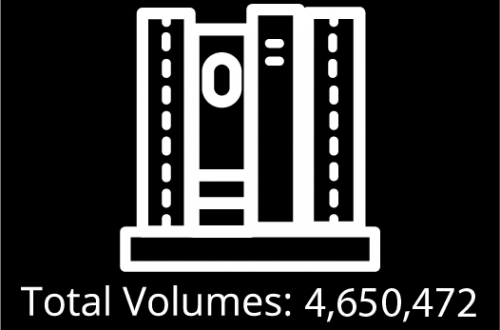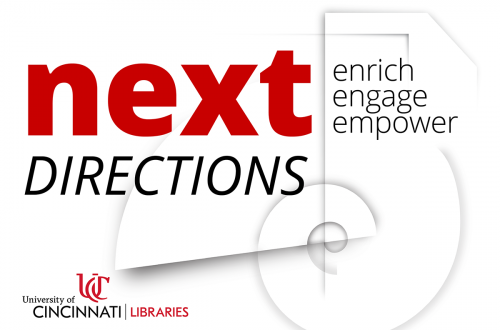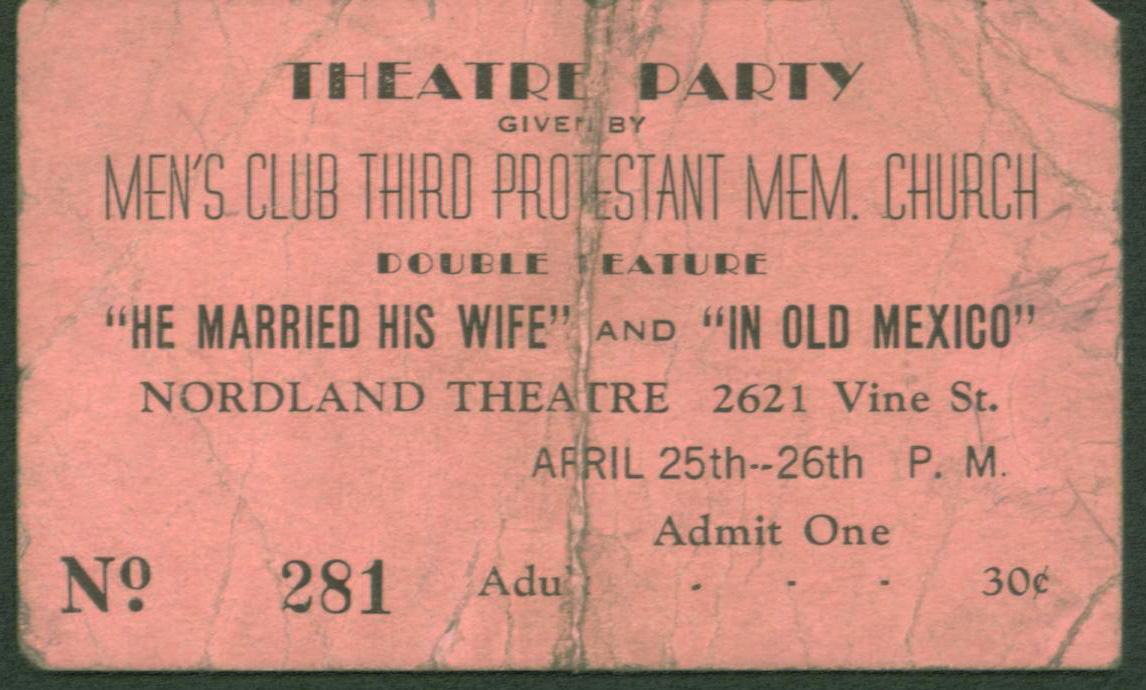
Highlighting Special Collections
During the academic year, UC Libraries acquired approximately 70,000 volumes. Here are highlights of new special collections.
Albert B. Sabin Notebooks
Dr. Albert B. Sabin, developer of the oral polio vaccine, donated his complete correspondence, laboratory materials, manuscripts, awards and medals to the University of Cincinnati where they are housed in the Henry R. Winkler Center for the History of the Health Professions. His papers document both the development and testing of the oral polio vaccine and the growth of virology as a discipline.
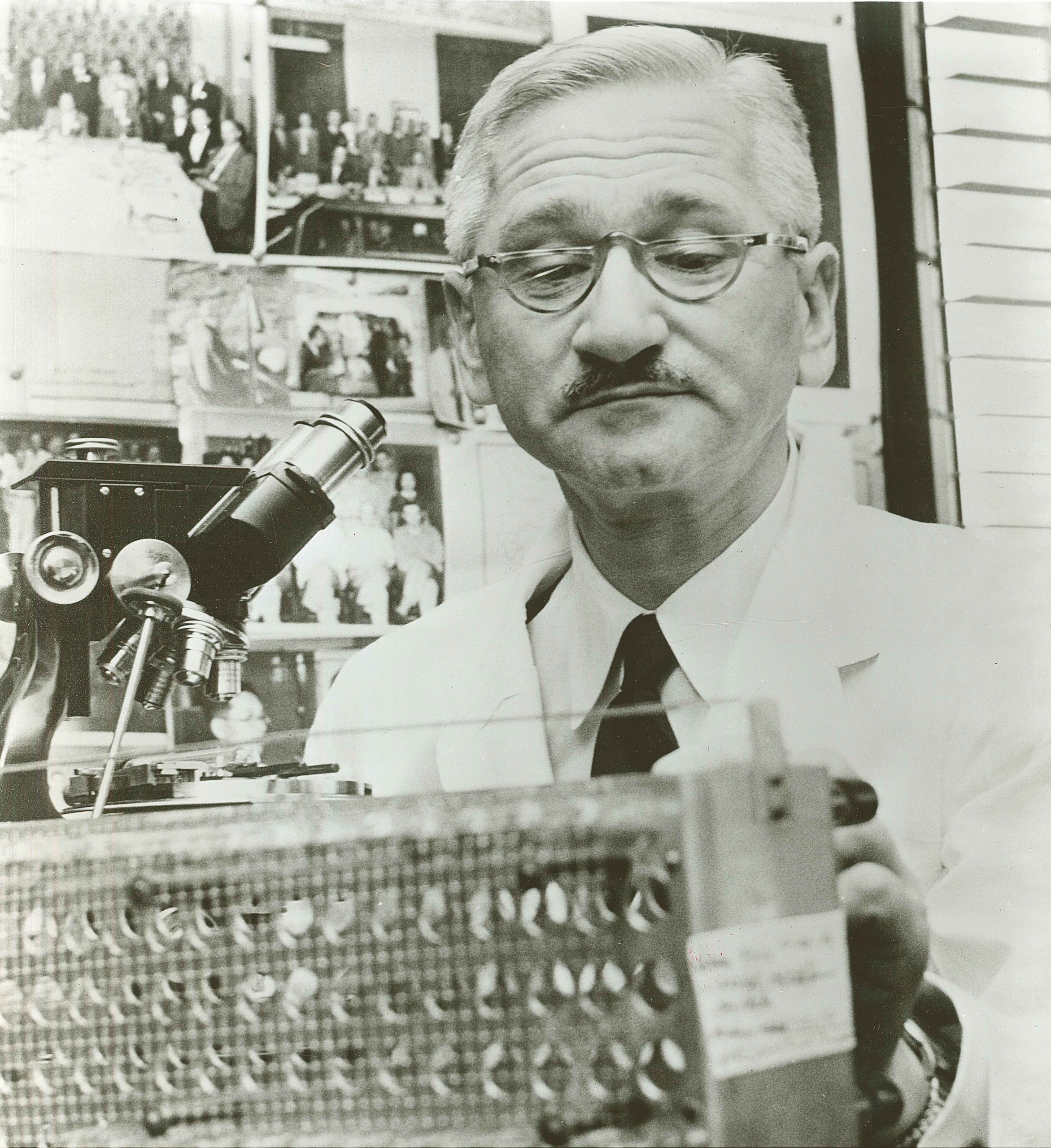
Selections of the Albert B. Sabin Papers Laboratory Notebooks were digitized with another gift from the John Hauck Foundation. The digitized materials were added to UC’s online repository, Scholar@UC (search “Sabin Notebooks”). The physical collection of laboratory notebooks holds the entirety of Sabin’s laboratory work during his time at Cincinnati Children’s Hospital Research Foundation and the University of Cincinnati (1935 to 1969), including his service to the United States during World War II.
To close and celebrate this recent project, the Winkler Center held a series of lectures dealing with Sabin, his research and the field of virology. These programs are financially assisted by the John Hauck Foundation, Fifth Third Bank, John W. Hauck and Narley L. Haley, Co-Trustees.
A New Accession to the Archives and Rare Books Holdings of the Cincinnati Ballet
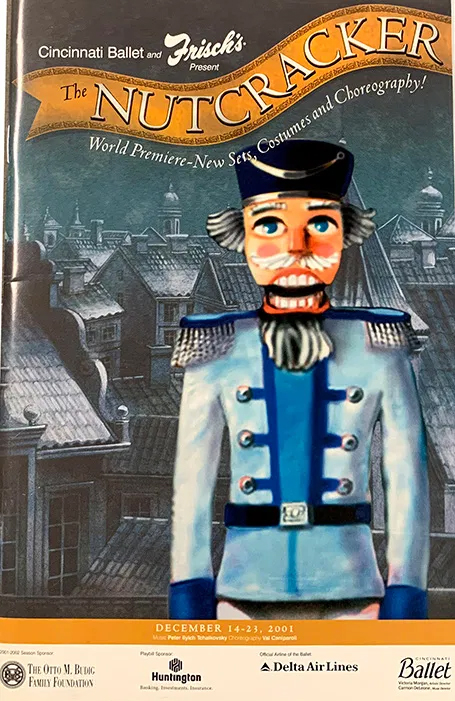
Founded in 1958, the Cincinnati Ballet is a vital, local cultural institution. The Archives and Rare Books Library holds the Ballet’s records beginning in 1960, and now, thanks to a recent acquisition, to 2017.
This most recent accession includes programs for Carmen, The Nutcracker, They Come Together festival and Swan Lake, along with costume sketches, choreography and pieces for Swan Lake and the Nutcracker.
Finding aids, with details on the contents, can be found online on the UC Libraries Finding Aid website.
Armstrong Brothers Donate Unique Relic of Aeronautical History
At first glance, the 1.125-inch piece of fabric known as muslin might not look like much, but it came from the wing of the Wright Flyer, the aircraft built by the Wright Brothers — the first aircraft to carry a person in flight. Neil Armstrong came into possession of the artifact through an arrangement with the U.S. Air Force Museum in Dayton, Ohio when he was asked to take remnants of the fabric and the propeller on the Apollo 11 mission — the first that would successfully land on the moon. Armstrong carried the pieces of the Wright Flyer along in his “personal preference kit,” a bag of significant belongings that each astronaut was allowed to load onto the lunar module.
This past February, Mark and Rick Armstrong donated the historic relic to the University of Cincinnati Libraries where it is now part of the College of Engineering and Applied Science Library‘s Neil Armstrong Commemorative Archive exhibit.
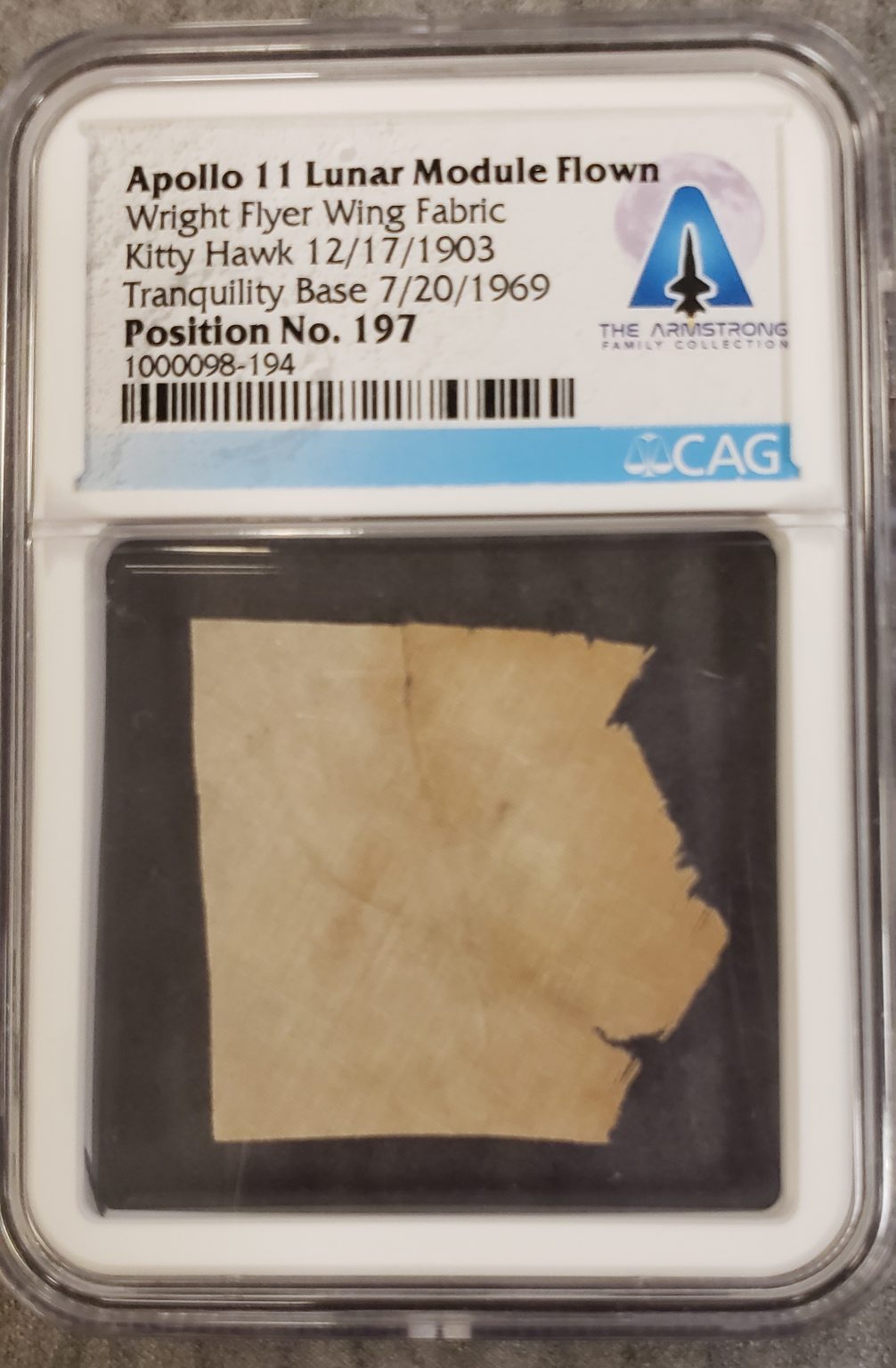
“It is our hope,” says Mark Armstrong, “that this artifact, which harkens back to the heyday of our space program, as well as the very first moments of powered flight, will encourage innovation and inspire future generations of students to dream of ways to build a safer and stronger tomorrow.”
The Neil A. Armstrong Commemorative Archive contains images, documents and texts, primarily from the University Archives, relating to the teaching career of Neil Armstrong at the University of Cincinnati (1971-1979). Also included are selected significant artifacts and documents from Armstrong’s life beyond the University of Cincinnati.
The Ingratitude of a Common-Wealth: Or, the Fall of Caius Matrtius Coriolanus
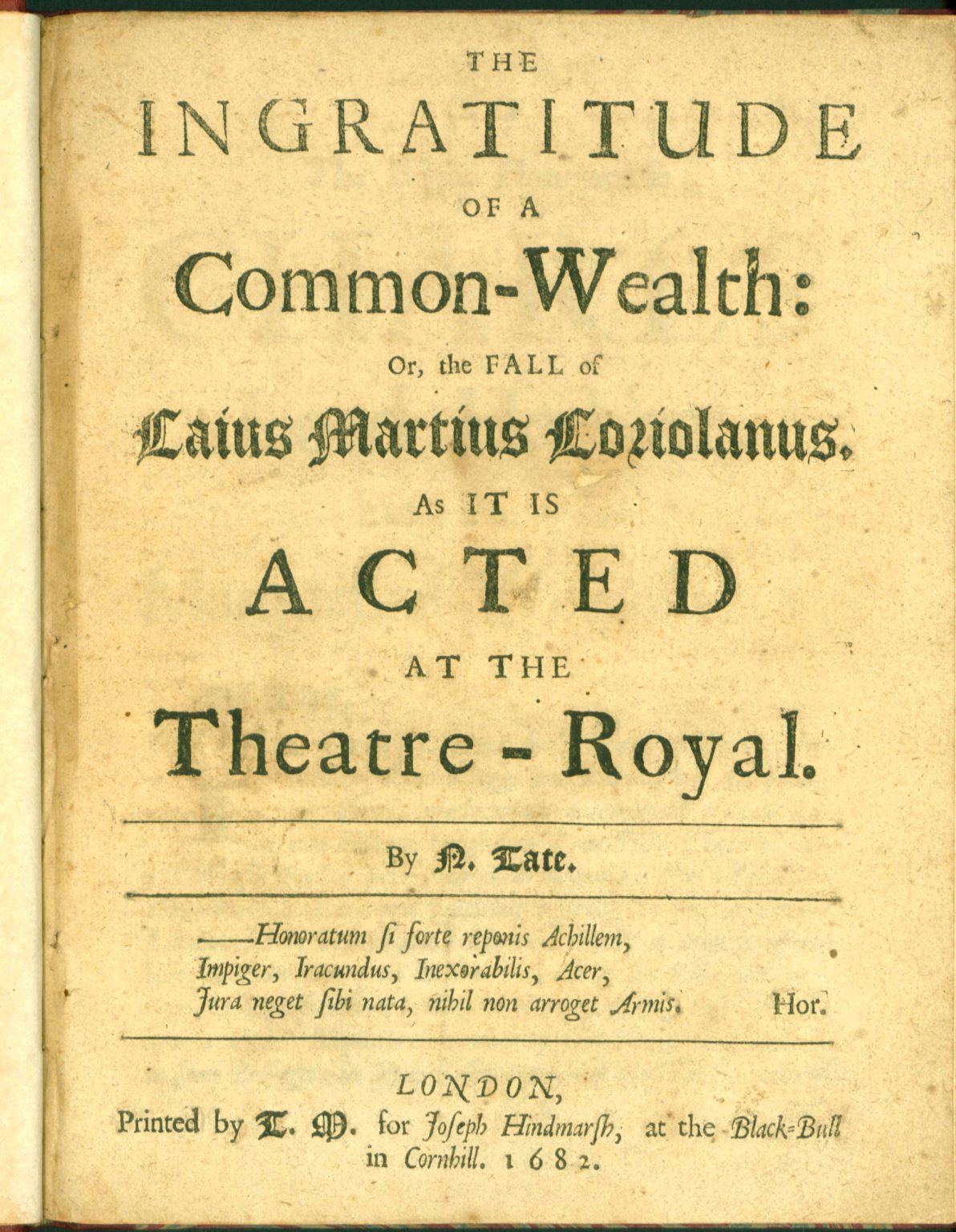
The Archives and Rare Books Library added an important volume to its Shakespeare holdings in the Rare Books Collection. The Ingratitude of a Common-Wealth: Or, the Fall of Caius Martius Coriolanus (London, 1682) is the earliest printed adaptation of William Shakespeare’s play, Coriolanus. It is believed that Shakespeare wrote Coriolanus between 1605 and 1608 but it was not published separate from the Folios until 1734. This adaptation of the story of a Roman general who was deposed is an example of how Shakespeare’s plays were performed in the decades following his death in 1616, and it adds to the Libraries’ Shakespeare holdings that began with a 1900 gift by William A. Procter of Cincinnati businessman Enoch Carson’s extensive library.
The Third German Memorial Church
The records of the Third Protestant Memorial Church of Cincinnati, formerly known as the Third German Protestant Memorial Church of Cincinnati, the German and Evangelical Lutheran and Reformed Church, and the North German Lutheran Church is one of the most researched collections in the Archives and Rare Books’ German Americana Collection. The documents Includes records of births, marriages, deaths, confirmations, along with financial records and photographs from 1814-1982, and the initial accession of 18 volumes has been digitized for wider use. The Archives & Rare Books Library recently acquired an additional 41 volumes that document the congregation’s organizations for its members, as well as church bulletins and minutes of the church council. Because of the extensive range of the church records, researchers are provided with a unique insight into an important element of Cincinnati – and German America – history.

New Digital Collections Supported by the Charles Phelps Taft Research Center
Gale Primary Sources:Refugees, Relief, and Resettlement
Refugees, Relief, and Resettlement: Forced Migration and World War II chronicles the plight of refugees and displaced persons across Europe, North Africa, and Asia from 1935 to 1950 through correspondence, reports, studies, organizational and administrative files, and much more. It is the first multi-sourced digital collection to consider the global scope of the refugee crisis leading up to, through, and after World War II.
The Making of the Modern World
Online resource provides digital facsimile images of unique primary sources that track the development of the modern, western world through the lens of trade and wealth with a focus on economics, political science, history, philosophy, sociology, and special collections on banking, finance, transportation and manufacturing. The three collections can be searched together, or individually. Part I: The Goldsmiths’-Kress Collection, 1450-1850 includes major works of many economists, political pamphlets and broadsides, government publications, proclamations, and ephemera. Part II: 1851-1914 is comprised mainly of monographs, reports, correspondence, speeches, and surveys, providing international coverage of social, economic, and business history, as well as political science, technology, industrialization and the birth of the modern corporation. It provides a glimpse into the second half of the 19th century and the global events and crises that were witnessed by those living them. Part III: 1890-1945 includes transnational coverage in an area of political economy, with content covering the First World War, the Great Depression, and the Second World War. Coverage: 1450 – 1945.


